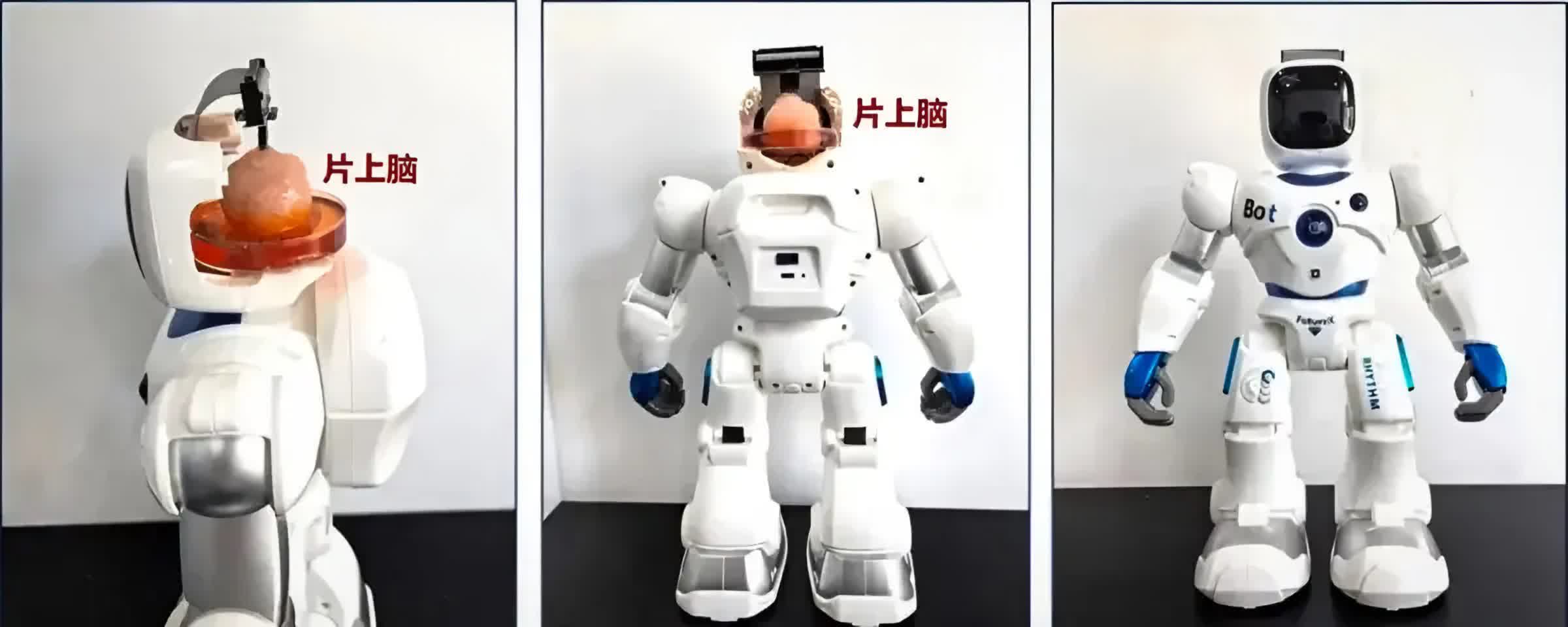In a nutshell: Interfacing brains with computers is challenging. It requires decoding complex neural signals, ensuring biocompatibility, and preventing immune responses, to name a few hurdles. Seamless communication between organic and inorganic systems requires advanced algorithms and precise neural mapping. Recent research shows that lab-grown “organoids” might help overcome some of these obstacles.
Chinese researchers from Tianjin University and the Southern University of Science and Technology have created a groundbreaking robot powered by a tiny organoid derived from human stem cells grafted to a neural interface. This breakthrough system allows the robot to learn tasks like obstacle avoidance and object manipulation.
Described as the “world’s first open-source brain-on-chip intelligent complex information interaction system,” the technology marks a significant advancement in brain-computer interfaces (BCIs) – devices that translate between neural and computational signals.
The South China Morning Post notes that the scientists grew the organoids from human pluripotent stem cells, which can develop into various cell types, including neural tissue. These synthetic-organic (pardon the oxymoron) brain cells are linked to the robot’s neural interface, enabling communication between the neural tissue and the robot’s systems. Although the presented images of pink brain matter are merely mockups (below), the actual organoids are much smaller.

Beyond their immediate application in robotics, researchers aim to use organoids for brain repair through transplantation, potentially aiding stroke victims and others with brain injuries.
“The transplant of human brain organoids into living brains is a novel method for advancing organoid development and function,” the study reads. “Organoid grafts have a host-derived functional vasculature system and exhibit advanced maturation.”
Despite these promising developments, the research is still at an early stage, and significant questions remain about the feasibility of repairing damaged brain tissues with organoids. Nevertheless, the potential is intriguing. Futurism notes that experiments at the University of Pennsylvania demonstrated that transplanting human neurons into rat brains with damaged visual cortices could revive the affected areas and restore response to stimuli like light.
In their recent work, the Chinese researchers used low-intensity ultrasound to enhance the integration of organoids into host brains. This technique improved the formation of neural networks, suggesting a non-invasive method to aid patients with brain damage. While this ultrasound treatment could facilitate the connection between organoids and computing interfaces, it represents a preliminary step towards the future goal of using lab-grown brain tissue to restore human brain functions.
This research underscores the potential of combining organoid technology with BCIs, paving the way for advanced therapeutic strategies and intelligent robotic systems. It also confirms findings in similar studies, such as Indiana University Bloomington’s “Brainoware” research.
Image credit: Maxuser






